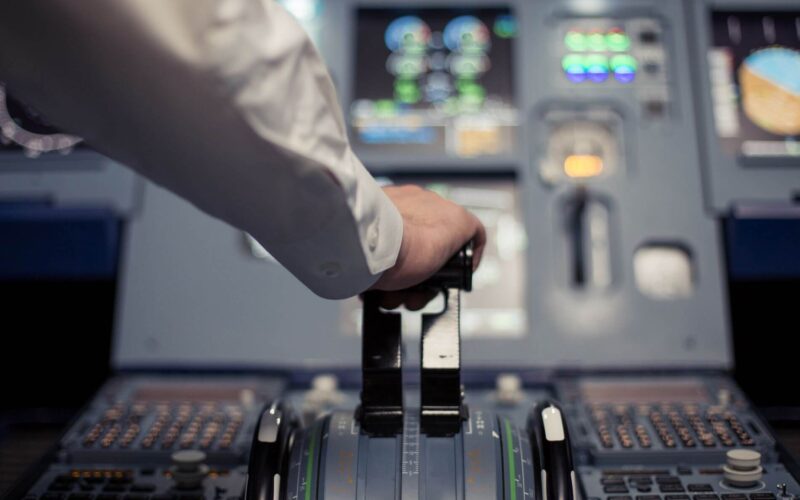Anyone who has at least a passing interest in aviation probably has encountered this stereotype: pilots are calm. They never lose cool or even raise a voice in extreme situations. They report an uncontained engine failure as if it was a daily occurrence, and ask for an emergency landing as if they were ordering their dinner.
Nowhere is it as clear as in recordings of emergencies. Here is an actual recording of the so-called Miracle on the Hudson, an incident where after a bird strike and a double engine failure pilots had to crash-land their A320 in a river:
How do they do that? What is their secret and can a regular mortal non-aviator learn it? Turns out, some things can be learned, while others cannot. Let’s start from the most obvious and the least applicable one:
Strict selection process
While the bar to become a commercial pilot is not as high as, say, to become a military one, there are still a lot of prerequisites. Therefore, personality tests are a crucial part of pilot selection in both pilot academies and airlines. Personality questionnaires that include assessment of pilot’s behavior are a part of Compass test, ADAPT test, and many other tests aspiring pilots are subjected to. Some academies even stage elaborate role-playing sessions to see how their students behave in difficult situations.
In addition to that, the regular training process is conducted under heavy pressure, where pilots are required to learn and perform tasks under strict time limit. The result of that – people who do not maintain appropriate level-headedness simply cannot pass the training. Often, it is not that pilots are calm, it is that non-calm people do not become pilots.
Scope of the training
Although it can be hard to believe by looking at the cockpit, the amount of systems a modern airliner carries is limited and there are even less ways those systems can break down. Therefore, it is possible to learn all of them and practice solutions to all problems that can arise.
One reason why pilots do not bat an eye at an engine failure is that they have encountered it during training, and solved it, and then solved it again under much more difficult conditions. Then they learned how to crash-land an aircraft if none of the possible solutions worked, and performed some exhaustive swimming exercises in a pool for a good measure.
The understanding that all arising problems can be tackled by applying a set of procedures is crucial for the pilot. Even in cases when the problem is yet unseen, there is an exhaustive list of measures to be tried just in case. There is no reason to panic if you know exactly what can be done to solve every problem.
Repetition repetition repetition
Several paragraphs above state that pilots likely encounter every possible engine failure in training. That is an understatement. They probably already encountered the failure numerous times and navigated their way through all the necessary procedures on more occasions than they themselves would like.
Drilling emergency procedures is one of the best ways to build confidence. For one, if you have done something enough times, you don’t have to think while doing it – your body does that for you. There are numerous stories of pilots who performed extraordinary feats and only later understood what they have actually done. As adrenaline kicks in, a human organism reverts to a kind of a primal state, doing tasks that are habitual and well-remembered. Pilot training uses this to everybody’s advantage.
Clear procedures
There are several mantras you are likely to encounter when talking to pilots about emergency situations. “Aviate, navigate, communicate” is one of them. It is drilled into a pilot’s consciousness and describes a way to prioritize tasks at hand: keep an aircraft flying, then understand its positioning, then exchange information with other parties. Do not let yourself be distracted by things that are of secondary or tertiary importance, engage them only after the single most important task is done.
There are other mantras, such as ALERTS (checking Airspeed, looking of Landing spot, securing the Engine, Radioing emergency, setting Transponder to 7700, and securing the Seatbelt) often used by private pilots, while military ones have their sets of acronyms too.
The point of all of them is to set a clear procedure that should be followed in every case, and which would show what well-learned skill should be prioritized at what time.
Taking a break
While many emergencies require immediate action, doing things impulsively is rarely a good idea. Taking a second or two to collect oneself, understand what is going on and then decide on a course of action is a procedure that helps many pilots to save lives.
It is what most pilots report doing first when they encounter a problem, as muscle memory of pulling a sequence of levers serves its purpose only after the brain decides which sequence it should be. The break for reflection and contemplation often is just several moments long, but even that is enough to put the mind into the right state.

